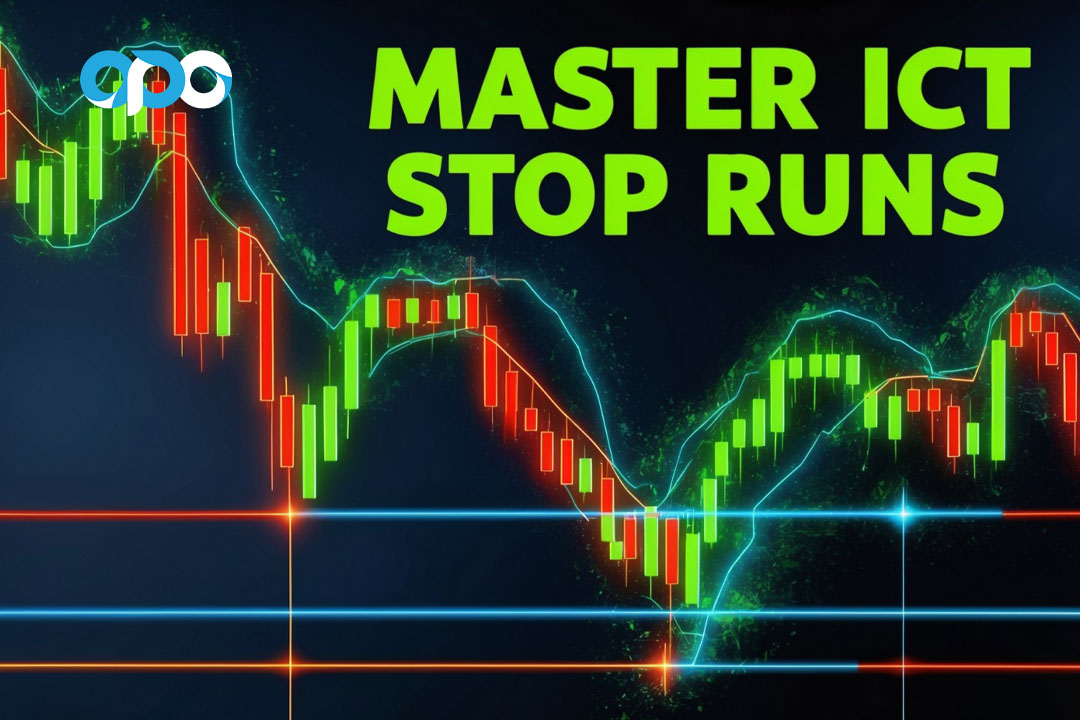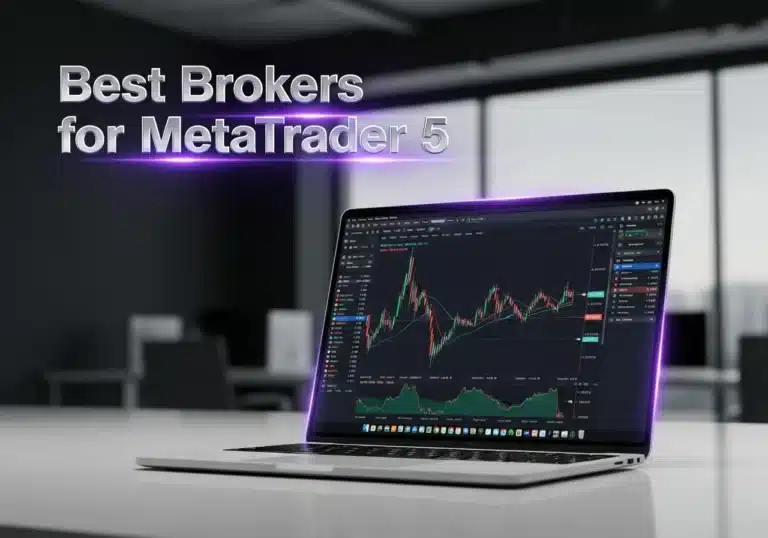In the complex world of forex trading, understanding market dynamics is crucial for success. One of the most important concepts that every trader should grasp is the ICT stop run. But what exactly is an ICT stop run, and why is it so critical for traders to comprehend? This article will delve deep into the concept of ICT stop runs, exploring how the market manipulates price movements and how traders can adapt their strategies to avoid falling into these traps. Whether you’re trading with a regulated forex broker or just starting your journey in the forex market, mastering the art of identifying and navigating ICT stop runs can significantly enhance your trading performance.

The ICT stop run, a term derived from “Inner Circle Trader stop run,” is essentially a price action pattern where the market deliberately moves to trigger traders’ stop losses before reversing direction. This sophisticated maneuver often catches inexperienced traders off guard, leading to unnecessary losses. By understanding and anticipating these moves, traders can position themselves to avoid these traps and potentially increase their profitability.
Understanding the Basics of ICT Stop Runs

What is a Stop Run?
A stop run happens when the market moves to a certain price level where it triggers stop-loss orders. This can happen above a swing high or below a swing low. After triggering these stops, the market usually reverses direction, often leading to significant price movement. In essence, the market hunts for liquidity by taking out these stops before making a move in the opposite direction.
Why Study Stop Runs?
The concept of a stop run is crucial for traders because it helps in recognizing potential market reversals. By studying stop runs, especially on the daily time frame, traders can better understand how price moves and where significant opportunities may lie. The daily time frame is particularly important because it gives a clear view of these movements, providing everything a trader needs to identify such setups.
The Psychology Behind Stop Runs
The effectiveness of stop runs lies in exploiting human psychology and common trading practices. Many traders, especially beginners, place their stop losses just below support levels or above resistance levels. The market capitalizes on this predictable behavior by pushing the price beyond these levels, triggering a cascade of stop losses and creating the perfect environment for a price reversal.
Identifying Potential Stop Run Zones
To spot potential ICT stop runs, traders should focus on:
- Swing highs and lows
- Key support and resistance levels
- Areas where multiple stop losses are likely to be clustered
- Price levels just beyond recent price action
These areas are prime targets for market manipulation due to the concentration of retail stop losses.
The Anatomy of an ICT Stop Run
Understanding the anatomy of an ICT stop run is crucial for any trader aiming to navigate the forex market successfully. These price movements are carefully orchestrated by market participants who seek to exploit common trading behaviors. By dissecting the phases of an ICT stop run, traders can gain insights into how these manipulations unfold and learn to anticipate them in their trading strategies.

Phase 1: The Setup
- Establishment of Swing Points: The market typically establishes a series of swing highs and lows that traders interpret as key support and resistance levels.
- Clustering of Stop Losses: Traders commonly place their stop losses around these levels, making them prime targets for manipulation.
- Trending Behavior: The market often shows a trend, either upward or downward, encouraging traders to take positions and set stops around the swing points.
- Psychological Trap: The appearance of stability and trend convinces traders of the trend’s strength, setting up the market for the next phase.
Phase 2: The Fake-Out
- Decisive Move: The market makes a sharp move that breaks a significant swing high or low, creating the illusion of a continued trend.
- Increased Volume: This move often comes with a surge in volume, reinforcing the belief that the trend is gaining momentum.
- Triggering Stop Losses: The move hits the stop losses clustered around the broken level, creating a burst of liquidity.
- Additional Entries: New traders may enter the market, believing the breakout is genuine, which adds more momentum to the move.
Phase 3: The Reversal
- Abrupt Turn: After triggering stop losses and potentially drawing in additional traders, the market swiftly reverses direction.
- Sharp Decline: In an uptrend, for instance, the price might rapidly fall after the initial breakout, catching traders who entered on the fake-out off guard.
- Panic Selling: Traders who bought into the fake-out may rush to exit their positions, increasing selling pressure.
- Exacerbation of Reversal: This panic can intensify the reversal, leading to significant price movement against the original trend.
Read More: Mastering ICT Smart Money Reversal
Phase 4: The Aftermath
- Uncertainty: After the reversal, the market might either resume its original trend or enter a period of consolidation, creating uncertainty among traders.
- Market Behavior: Observing the market’s behavior post-reversal is crucial. The market may show either a continued trend with greater conviction or settle into a consolidation phase.
- Cautious Environment: Traders who were caught in the stop run may become more cautious, leading to lower volatility or a more hesitant trading environment.
Key Takeaways from the Anatomy of an ICT Stop Run
- Psychological Manipulation: The stop run exploits trader psychology, particularly the tendency to place stop losses at predictable levels.
- Liquidity Pools: Recognizing where stop losses are clustered can help anticipate potential stop runs.
- Market Reversal: A rapid reversal following a stop run is a hallmark of these manipulative movements. Being aware of this can help avoid getting caught in the wrong direction.
- Post-Run Analysis: Analyzing market behavior after a stop run can provide valuable insights into future price movements and trends.
By understanding these phases, traders can better prepare for and respond to stop runs, improving their ability to navigate these market manipulations effectively.
Strategies for Avoiding ICT Stop Runs

1. Understand Market Structure
Pay close attention to the overall market structure. Look at swing highs and lows on multiple timeframes to get a comprehensive view of potential stop run zones.
2. Use Naked Chart Analysis
As mentioned in the provided text, focusing on candlestick patterns without relying heavily on indicators or trend lines can help you better understand price action and potential stop runs.
3. Be Cautious of Divergence
While divergence can be a useful tool, be aware that it can also precede a stop run. Don’t automatically assume a trend change when you see divergence.
4. Observe Price Behavior After Breakouts
After a significant level is broken, watch how price behaves. A quick reversal after taking out a swing high or low could indicate a stop run.
5. Consider Multiple Timeframes
A stop run on a lower timeframe might be part of a larger trend on a higher timeframe. Always consider the bigger picture when analyzing price action.
Common Mistakes to Avoid
- Placing Predictable Stop Losses: Avoid placing your stop losses at obvious levels where they’re likely to be targeted.
- Ignoring Context: Always consider the broader market context and ongoing trends when analyzing potential stop runs.
- Overreacting to Single Candle Movements: A single candle breaking a level doesn’t always indicate a true breakout or reversal.
- Neglecting Risk Management: Even when you think you’ve identified a stop run, always use appropriate position sizing and risk management techniques.
Advanced Techniques for Identifying Stop Runs
Multiple Level Analysis
Look for instances where price takes out multiple swing highs or lows. As mentioned in the text, taking out several levels is more likely to indicate a stop run, especially on higher timeframes.
Quick Reversal Identification
Pay attention to how quickly price reverses after taking out a level. A swift reversal is often a hallmark of a stop run.
Volume Analysis
While not mentioned in the provided text, incorporating volume analysis can provide additional confirmation of a stop run. Unusually high volume during the fake-out phase followed by a reversal could indicate a stop run.
The Role of Liquidity in Stop Runs
Understanding Liquidity Pools
Stop runs often occur in areas of high liquidity, where many stop losses are clustered. Understanding where these liquidity pools are likely to exist can help you anticipate potential stop runs.
Liquidity Grabs
The market often moves to “grab liquidity” by triggering stop losses. Recognizing these liquidity grabs can help you avoid being caught in a stop run.
Risk Management in Stop Run Scenarios

Wider Stop Losses
Consider using wider stop losses to avoid being taken out by minor price fluctuations or stop runs.
Partial Position Closing
Instead of using a single stop loss, consider closing parts of your position at different levels. This can help you maintain a position even if a stop run occurs.
Re-entry Strategies
If you’re taken out by a stop run, have a plan for potentially re-entering the market if your original analysis still holds true.
Read More: Mastering ICT Risk Management
The Future of Trading and Stop Runs
Evolving Market Dynamics
As more traders become aware of stop runs, the nature of these market manipulations may evolve. Stay adaptable and continue to refine your understanding of market dynamics.
Technology and Analysis Tools
While the provided text emphasizes naked chart analysis, evolving technology may provide new tools for identifying and avoiding stop runs. Stay informed about new developments in trading technology and analysis methods.
OpoFinance: Your Partner in Navigating Market Complexities
When it comes to navigating the complexities of the forex market, including ICT stop runs, having a reliable broker is crucial. OpoFinance, an ASIC-regulated forex broker, offers a suite of tools and services designed to support traders at all levels. With its advanced trading platform, competitive spreads, and robust educational resources, OpoFinance provides an ideal environment for traders looking to refine their skills in identifying and avoiding stop runs.

One of OpoFinance’s standout features is its innovative social trading service. This platform allows traders to connect with and learn from experienced peers who have developed strategies for navigating market manipulations like stop runs. By leveraging OpoFinance’s social trading platform, you can gain insights from successful traders and potentially improve your ability to spot and avoid stop runs.
Read More: Master ICT High-Probability Scalping
Conclusion
Understanding and navigating ICT stop runs is a crucial skill for any forex trader. By recognizing the patterns and psychology behind these market manipulations, you can protect your trades and potentially turn these situations to your advantage. Remember that successful trading in the face of stop runs requires patience, discipline, and continuous learning.
As you continue your trading journey, focus on developing a keen eye for market structure, practice analyzing naked charts, and always prioritize risk management. With practice and persistence, you can learn to navigate the complexities of the forex market, including ICT stop runs, and improve your overall trading performance.
How can I differentiate between a genuine breakout and a stop run?
Differentiating between a genuine breakout and a stop run requires careful observation of price action. In a stop run, the price typically reverses quickly after taking out a key level, often within a few candles. A genuine breakout, on the other hand, tends to show more sustained momentum. Additionally, consider the context: if the move contradicts the overall market structure or seems to target obvious stop loss levels, it’s more likely to be a stop run.
Are stop runs more common in certain currency pairs or timeframes?
Stop runs can occur in any currency pair and on any timeframe. However, they may be more noticeable on higher timeframes like the daily or weekly charts, where the moves are more significant. Highly liquid pairs might experience more sophisticated stop runs due to the higher volume of trades and stop losses. Always consider multiple timeframes when analyzing potential stop runs to get a comprehensive view of the market structure.
How can I adjust my trading strategy to account for potential stop runs?
To account for potential stop runs, consider the following adjustments to your strategy:
Use wider stop losses to avoid being taken out by minor price fluctuations.
Implement a scaling in/out strategy rather than entering or exiting a full position at once.
Be patient and wait for confirmation of trend direction after a potential stop run before entering a trade.
Use multiple timeframe analysis to understand the broader market context.
Practice identifying liquidity pools where stop runs are more likely to occur.
Remember, the key is to remain flexible and always prioritize risk management in your trading approach.








2 Responses
Can you write a article on ICT balance price range ?
sure, just told to the author 🙂